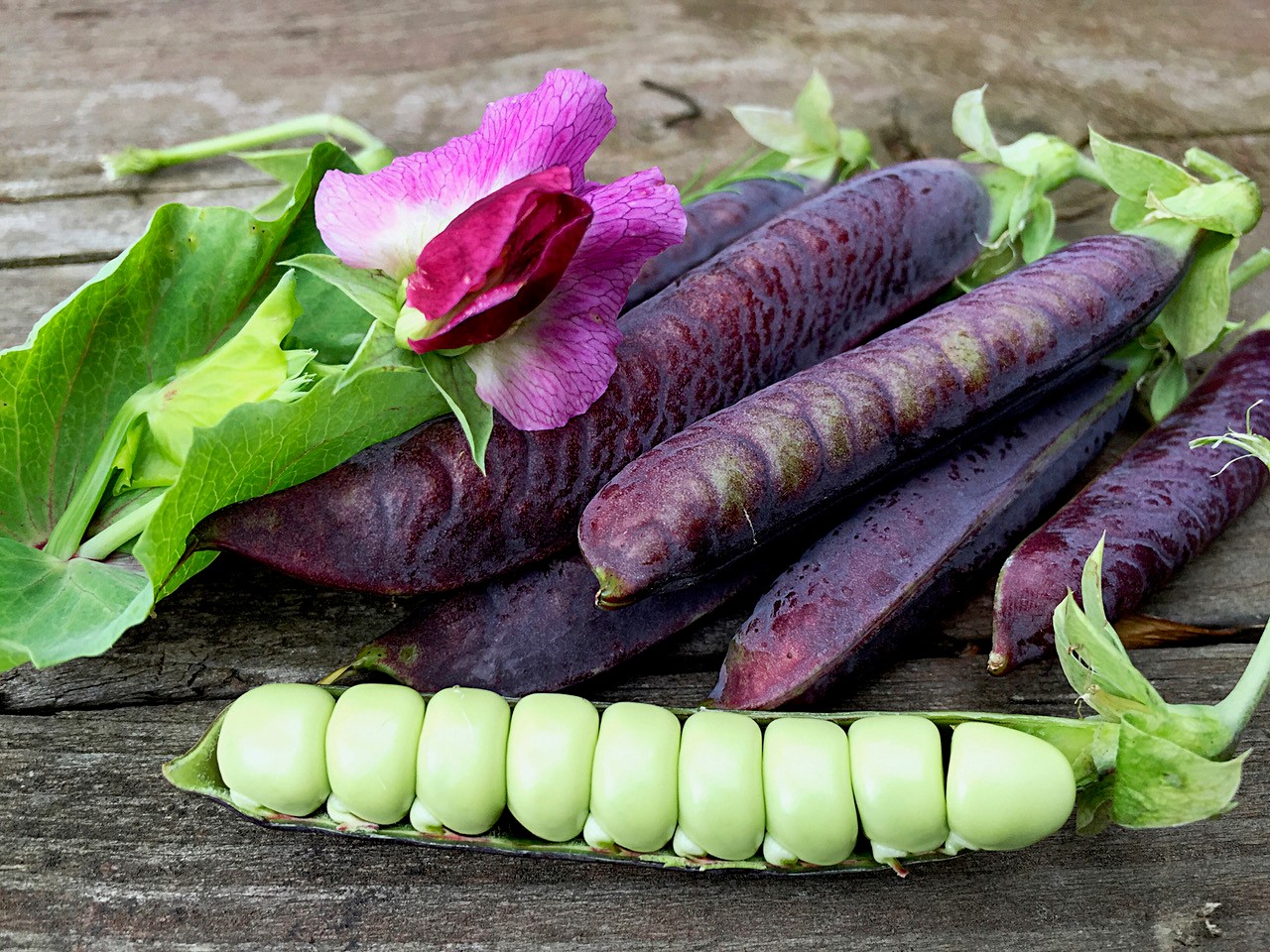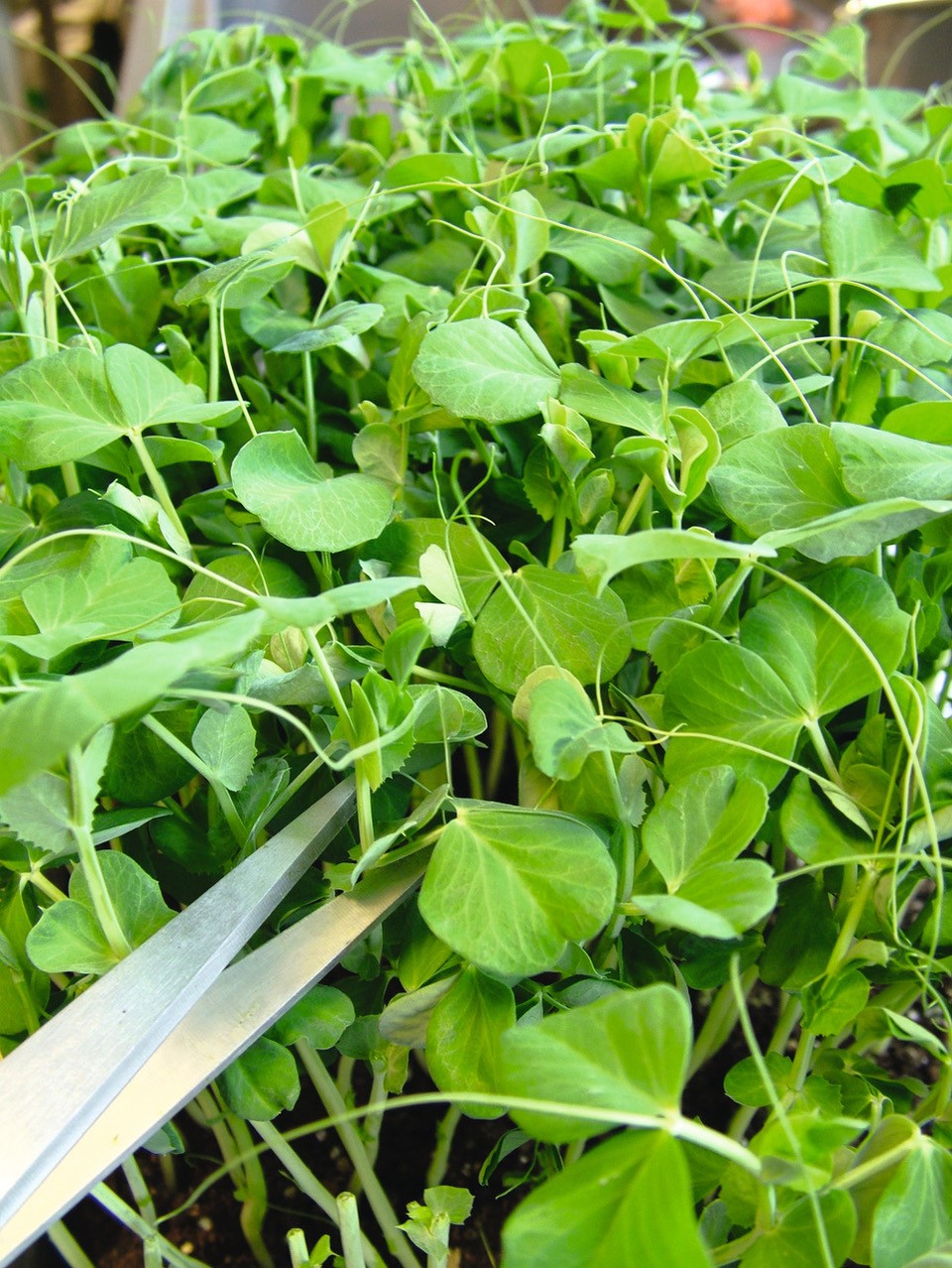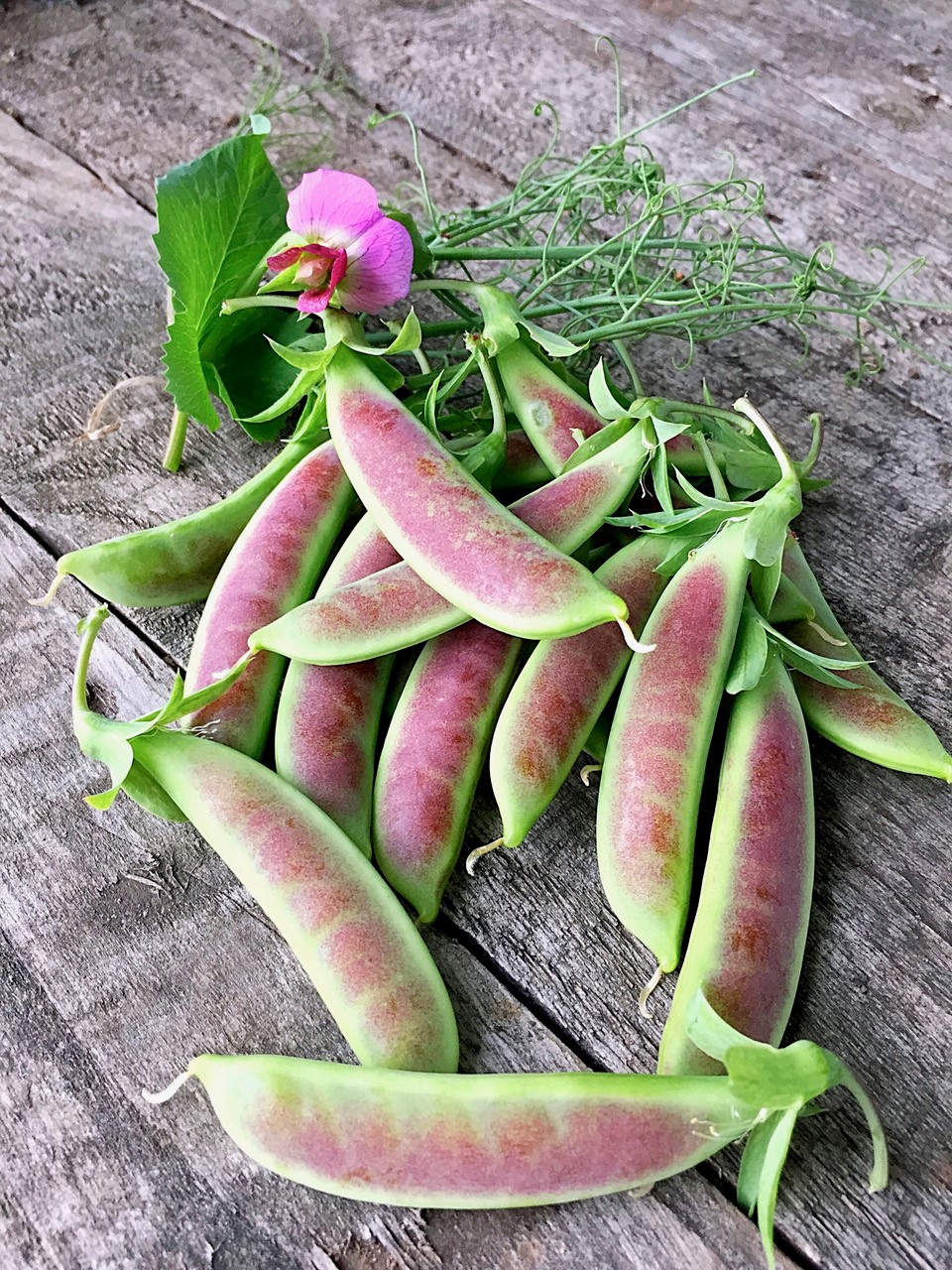
Thinking of growing a few more veg for your menus this season? Give peas a grow, you might be surprised how versatile these plants are
What comes to mind when you think of peas? Mushy peas with your supper, or podding peas at the kitchen sink?
If you’ve grown peas before you might have discovered a bit of a love hate relationship. They taste lovely, fresh from the pod, and especially when young but you do need a lot of pods for a decent harvest of peas and that means de-podding them, which some people love and others don’t.
Don’t let that put you off, there’s far more to peas than meets they eye and there are also ways around the podding issue if that’s your nemesis.
Edible pods
If you don’t want to depod your peas, eat them – the pods. You could pick your pea pods when immature, or why not choose to grow Mange Tout peas – the litereal translation is each all. These flatter pods are perfect for stir fries, or eat them raw in salads or for snacks – if you leave them on the plant for longer you can also eat the peas inside, so it’s a win, win pea that you can grow. If you are short on space, choose a compact variety that ypu could grow in a large pot or window box. Look out for purple mangetout that have pretty pink flowers and deep mauve pods. Sugar snap peas are another option; with fleshier pods that you can eat, slice, steam or even boil.
Eat shoots and leaves

It’s not just the pea pods that are edible. You can eat the leaves, the tendrils and the shoots too. But with a caveat here – be really clear that sweet peas, the ornamental peas are NOT edible and the seeds are poisonous. Don’t grow sweet peas near to edible peas to ensure that you don’t muddle them up, especially if you plan to eat shoots and leaves.
When it comes to edible peas there’s another lucrative harvest you can make. The early shoots and tendrils are on trend as a garnish in high-end restaurants and they are plentiful and so easy to grow. And of course you could simply sprout the peas and eat the pea sprouts.
Easy from seed
Peas have to be one of the easiest plants to grow. A perfect gateway plant if you are new to growing from seed. Great for the kids too as they will just love picking the pea pods and popping out those sweet and tasty peas – what could be better you’ll have them eating fresh veg voluntarily and learning about growing too?
The other great thing about growing peas from seed is that there are literally hundreds of pea seeds in a packet, so that means you can sow in succession from one packet. And even better your peas aren’t that bothered about frost. They won’t grow as fast in the cold, but they will grow and they won’t be annihilated by Jack Frost’s icy fingers. With hundreds of seeds to sow, you can sow them en masse in different ways and reap all the benefits of this very versatile crop.

Gather up old guttering, fill the bottom with an inch or two of seed compost and sprinkle the seed on top. Cover it over with a smidgeon more compost, gently water and leave in a light airy place to germinate. An unheated glasshouse is ideal. You can then harvest the shoots, leaves and tendrils or make a shallow depression in the soil in your veg patch and just slide the plants, roots and all into the hollow where they will grow on. Re-use the guttering for the next crop, and repeat. You’ll have pea shoots galore all spring and peas for summer, maybe enough to make pea shoot wine?
Plus you are also providing vital food for many pollinators in your garden that will climb into the flowers searching for valuable pollen and nectar.
So whether you want peas to pod, or shoots and leaves and tendrils for plate garnishes and salads, give peas a chance and get sowing and growing now.


